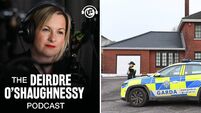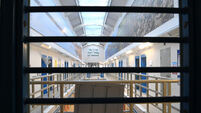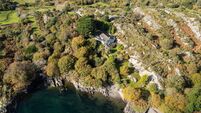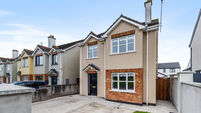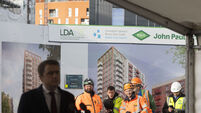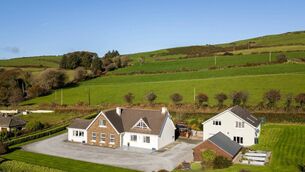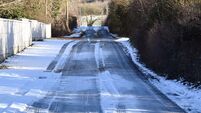You can teach an old house new tricks: the 16th century cottage with an A1 energy rating

Historic Abbey House in Kinsale, Co Cork, owned by architects Marc Ó Riain and Deborah Ní Riain, is one of the estimated 46,000 homes where retrofitting works were completed last year, ahead of the government’s target of 36,000. Photo: Paul Sherwood
Welcome to Ireland’s oldest energy efficient home — a 16th century former friar’s cottage once associated with a Carmelite abbey and which has been lovingly restored and upgraded over the last two decades to achieve a remarkable A1 energy rating.
Historic Abbey House in Kinsale, Co Cork, owned by architects Marc Ó Riain and Deborah Ní Riain, is one of the estimated 46,000 homes where retrofitting works were completed last year, ahead of the government’s target of 36,000.
But this one is steeped in history and heritage, and has smashed the previous oldest AI BER rating by at least 230 years.
“Whilst some of the character of the house seems to have been acquired at the various stages of remodelling through the centuries, the imperfections of the building, whilst frustrating at times, certainly give it a lot of charm,” Mr Ó Riain said.
While Kinsale became a chartered town in 1333, it had been a settlement long before with St Multose church built in 1190 and the Carmelite Friary, St Mary’s Abbey, established outside the town walls by the mid-1300s.
Carmelite history records that the dissolution of the monasteries by Henry VIII led to the suppression of the abbey in 1541, at a time when it consisted of a church, belfry, hall, some friar houses and a cemetery.
Anything of worth, including some of the friar’s houses, was disbursed and the abbey was put to many uses in the years afterwards.

Records show that by 1567, Abbey House, which was then known as “the house of the Friars of Our Lady of Kinsale” was leased to merchant Robert Meade for 21 years and subsequently leased on to other merchants.
While the abbey buildings were destroyed by gun fire during the Siege of Kinsale in 1601, today, you can trace the remains of three ruined cottages inside the abbey’s graveyard walls, with two remaining cottages still standing outside the wall — Abbey House is beside the graveyard wall, close to the original friar’s gate to the town.
Despite its remarkable history, it is not a listed property.
Marc and Deborah bought it in 2003 and run their practice, RUA Architects, from it.
“The house was mostly occupied by spiders when we got it,” Mr Ó Riain said.
“It had single glazed windows, a 1980s extension to the rear with some 1930s wiring, and there wasn't a 90-degree angle in the house.
“Although the house is much changed over the intervening years, the thick stone walls of the original house are still evident standing in the living room.”

The couple spent several years researching with “care and thought” their proposed renovations and upgrades.
In the mid noughties, they took up the floor, insulated it and put down a reclaimed timber parquet floor from an abbey in Scotland.
“We insulated the ground floor walls but avoided insulating the limited stone wall element as this, we felt, would ruin the character of the original building,” Mr Ó Riain said.
“It was at this point that we put new energy performance double glazing to the rear and side of the 1980s extension."
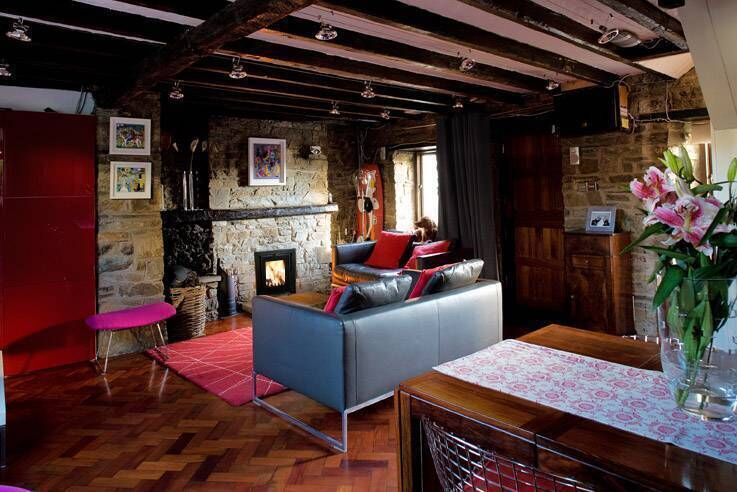
They replaced the open fire with a "game changer" stove in 2010 and the house became instantly warmer and more cost-effective to heat.
Mr Ó Riain said: “In 2014 we renovated the first floor with a little bit more knowledge of passive house design, and we got a lot of insulation and detailing right.
“We insulated the pitched roof and the attic space at this time.
“In 2020 we got Brendan Hunter in Tipperary to make new heritage casement windows with energy-efficient glazing for the front of the house.
“The existing half door was great to keep the dogs in, but terrible at keeping the draught and rain out.
“Most recently, we fitted a new energy efficient heritage door, made by Carlson in Dublin to match the window style.
“We also fitted solar panels and a heat pump when the insulation measures had reduced our overall heat loss to a point where a heat pump would make sense.
“Our oil boiler was on its last legs and we were fairly determined to have an energy efficient and environmentally sustainable heating solution.
“Our house now is 86% powered by renewable energy and is a lot more comfortable as a space to live in.

“There is still stuff to do even though we achieved an A1 BER rating."
They plan to hack off the sand and cement render which was probably applied in the last 90 years on the front of the house and replace it with an insulated lime, because the uninsulated stone wall is still losing some heat and some of the exterior timbers are rotting either through exposure or being unable to breathe or dry out properly.
The retrofitting work on their own home is one of five delivered A1 retrofits carried out by RUA Architects last year on buildings that range from a 1911 terrace property, to a 1972 bungalow bliss-style property and a more modern 2002 bungalow.
Mr Ó Riain, who has a PhD in zero energy retrofit, is now writing a guidebook for energy efficient retrofits setting out the various solutions for different types of buildings, and offering tips on how to avoid or plan for some of the hidden costs associated with the work.
He also has useful videos on his retrofits on RUAArchitects.ie and on Vimeo.




